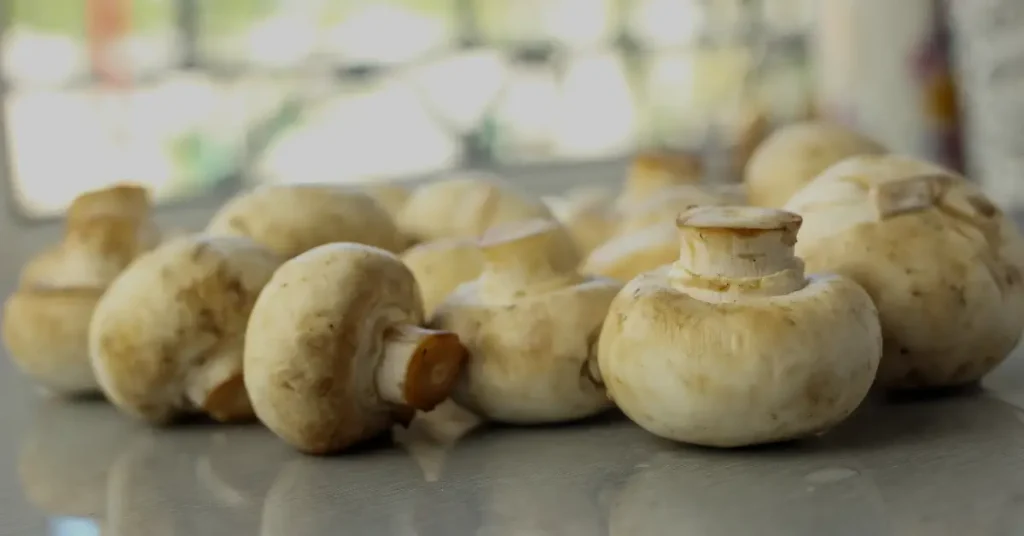How To Store Chestnut Mushrooms: 8 Methods

Are you a fan of risotto or mushroom burgers? These flavorful fungi are a popular choice among chefs and home cooks.
Whether you’ve recently harvested some from your garden or picked up a container at the grocery store, you are looking for the best ways to store chestnut mushrooms to keep them fresh and flavorful.
Proper storage is essential to preserve the freshness and flavor of chestnut mushrooms. By following the correct methods, you can extend the shelf life of these delicate fungi and ensure they stay at their best for longer. At room temperature, they retain their freshness for 1-2 days, and if stored in a freezer, they can last up to 9-12 months.
Remember, a little care goes a long way in preserving these delicious fungi. Continue reading how to store chestnut mushrooms.
| Method | Reliability (Freshness) | Spoilage Rate |
| Paper Bag with Paper Towels | Excellent (Freshness) | Very Low |
| Dehydrator | Excellent (Long Term) | None |
| Bowl with Paper Towels | Good | Low |
| Paper Bag | Good | Low – Medium |
| Stainless Steel Container | Moderate | Medium |
| Plastic Bag with Paper Towels | Moderate | Low |
| Bowl with Plastic Wrap | Moderate | Medium |
| Original Container (Plastic) | Moderate | High |
1. Paper Bag with Paper Towels
- Prepare Materials: Collect brown paper bags and paper towels.
- Line the bag: Fold a piece of paper towel and place it inside the paper bag.
- Add the mushrooms: Place your mushrooms in a paper bag lined with a paper towel.
- Close the bag: Fold the top of the paper bag to close it.
- Store in a cool place: Store the bag in a cool place, such as a refrigerator, out of direct sunlight.
- Check periodically: Open the bag every few days to inspect the mushrooms.
| Key Takeaway: Combining paper bags and paper towels helps keep mushrooms fresh over 10 days. The paper bag allows airflow, while the paper towel absorbs excess moisture, preventing sliminess. After 10 days, mushrooms in this setup mainly remained fresh, with only slight changes in color and texture. This method is simple and effective for storing mushrooms longer. |
2. Dehydrator
Dehydrating mushrooms is another great way to store them for later use in recipes.
Here’s how to do it:
- Preparation: Clean your chestnut mushrooms thoroughly with a damp cloth or soft brush to remove dirt.
- Slicing: Using a sharp knife or food slicer, slice the mushrooms into thin, even slices. Aim for slices that are about ¼ inch thick.
- Arrange: Place the mushroom slices in a single layer on a dehydrator tray, making sure they don’t overlap.
- Set the temperature: Set your dehydrator to about 130°F (54°C), as mushrooms dry best at a lower temperature.
- Drying time: Allow the mushrooms to dry for about 4-6 hours, checking occasionally for dryness. They will crack when completely dry.
- Storage: Once dried, allow mushrooms to cool completely before storing in airtight containers or vacuum seal bags.
3. Bowl with Paper Towels
- Prepare the Bowl: Line a large glass bowl with paper towels.
- Spread the Mushrooms: Place the mushrooms evenly in the bowl.
- Cover with Paper Towels: Add another layer of paper towels over the mushrooms.
- Check Daily: Unlike using plastic wrap, you can check your mushrooms daily with this method.
- Monitor Moisture: Ensure the paper towels stay dry; they should absorb any excess moisture.
- Observation after 10 Days: After 10 days, inspect your mushrooms.
- Results: If they remain dry and fresh after five days, that’s a good sign.
- Final Evaluation: After 10 days, if any mushrooms develop a slimy film or dark spots, discard them.
| Key Takeaway: Although using a paper towel in a bowl improves freshness compared to plastic wrap, it’s important to be careful. Even the slightest slime or dark spots indicate spoilage, so it’s best not to risk eating the remaining mushrooms. |
4. Paper Bag
1. Prepare the Paper Bag: Get a brown paper bag from your kitchen or store.
2. Transfer Mushrooms: Gently move the mushrooms from their original container to the paper bag.
3. Place in Fridge: Set the paper bag with mushrooms in the refrigerator.
4. Check Regularly: Keep an eye on your mushrooms every few days to see how they’re doing.
5. Assess the Results: Check for dryness, wrinkles, and dark spots on the mushrooms.
6. Decide What to Do: If there are any dark spots, discard those mushrooms. However, don’t worry if they look wrinkly; they can still taste great.
| Key Takeaway: The paper bag kept my mushrooms from drying out too quickly, but some developed dark spots. I learned that even if mushrooms look tired, they can still be delicious. |
5. Stainless steel container
Stainless steel containers are good options for mushrooms to keep them fresh longer.
Here’s how to store them:
- Choose the right size: Choose a container that fits your mushroom stash.
- Clean thoroughly: Wash the container with mild soap and water before storing your mushrooms. Dry it completely.
- Keep it dry: Moisture is the enemy of freshness. Make sure your mushrooms are dry before placing them in the container.
- Store properly: Arrange your mushrooms in a single layer inside the container. Avoid overcrowding to avoid injury.
- Seal it tight: Seem the container tightly to keep air out once your mushrooms are stuck inside.
- Refrigerate: Refrigerate the sealed container to maintain freshness for longer.
6. Plastic Bag with Paper Towels
Gather Materials: Gather mushrooms, paper towels, and a plastic bag.
- Wrap mushrooms: Wrap mushrooms loosely in paper towels to absorb moisture.
- Place in a plastic bag: Place the wrapped mushrooms in an open plastic bag.
- Store properly: Place the bag in the refrigerator’s vegetable drawer.
- Check regularly: Check the mushrooms every few days for freshness.
- Consume Within Time Frame: Consume mushrooms within one week for the best flavor and quality.
| Key Takeaway: A plastic bag with paper towels is a great idea to keep mushrooms fresh. However, after 10 days, my mushrooms were slimy and discolored. I found that this method trapped the moisture instead of blocking it, causing it to deteriorate faster than expected. Monitoring wetness is key to making sure this method works effectively. |
7. Bowl with Plastic Wrap
Try using a bowl and plastic wrap to keep chestnut mushrooms fresh longer.
- Prepare the Bowl: Use a large glass bowl, ensuring it’s spacious enough to avoid crowding the mushrooms.
- Place Mushrooms: Put the mushrooms in the bowl.
- Cover with Plastic Wrap: Completely cover the bowl with plastic wrap.
- Create Ventilation: Poke five holes in the plastic wrap to allow air circulation.
- Monitor Occasionally: Check the mushrooms occasionally.
- Observe Results: After 10 days, inspect the mushrooms for any changes.
- Evaluate: Note any dampness, slime, or discoloration.
- Consider Safety: If mushrooms show signs of spoilage, it’s best to discard the entire batch.
| Key Takeaway: While this method helped preserve some mushrooms, it’s still not the best for long-term storage due to potential moisture buildup and the risk of spoilage. |
8. Original Container
- Store chestnut mushrooms in their original container with ventilation holes.
- Immediately after purchase, place the container on the middle shelf of the refrigerator.
- Check visually every two days for about 10 days.
- Look for any changes, such as discoloration, slime, or mold.
| Key Takeaway: This method works best for short-term storage, up to five days. However, mushrooms can develop slime, mold, and odor over a long period. |
How We Tested the Methods
We checked which storage method worked best for mushrooms by conducting experiments over a few weeks. We bought fresh chestnut mushrooms and split them into groups, trying eight different methods. Each day, we watched for appearance, texture, and smell changes. After two weeks, we assessed which method kept the mushrooms in the best condition.
Final Thoughts
Our tests found that storing chestnut mushrooms in a paper bag with paper towels worked best for keeping them fresh. This method allowed airflow while absorbing excess moisture, preventing sliminess.
Dehydrating mushrooms also proved effective for long-term storage. Using original containers was suitable for short-term storage but not ideal for longer periods.
Overall, proper ventilation and moisture control are essential for preserving mushroom freshness.

Hi, I am Nazish Arif. I am a Food Scientist. On this Blog, I do share insights about Chestnut Mushrooms, Mushrooms Recipes, along with information of other mushrooms as well.






